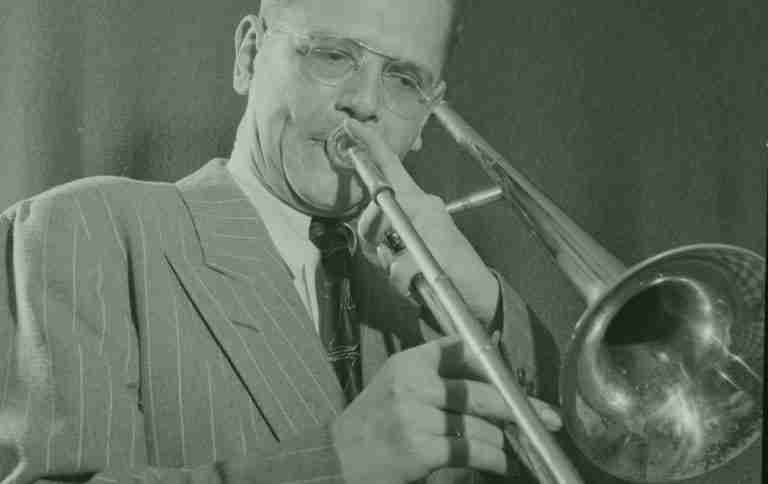Lately I’ve realized that to get to specific parts of a solo that I’ve transcribed to memory, I’m quite dependent on the material that comes before them. In other words, I’ve learned the solo from start to finish, the way it was originally played, and therefore, have difficulty jumping around to different sections at will…
The goal is to own this material: imitate it, assimilate it, and innovate upon it, as Clark Terry so eloquently stated. Being able to accesses the material from various entry points greatly improves your mastery of the solo, as well as your understanding of the construction of the solo. This is wonderful ear training too. Increasing your aural memory, strengthening it and giving you the ability to retain larger chunks of music in your mind.
Define each chorus in your mind
For this exercise, choose a solo you have memorized that has a short form, a blues works perfectly, and it should be between 5 and 10 choruses. Play through the solo at medium tempo and note where the beginning of each new chorus occurs.
Do not to break up the phrases. For example, if a chorus starts with a phrase that is a measure early, include that phrase in the chorus. When I start to practice a solo this way, I pause between choruses and verbally say what chorus number I’m about to play.
Do this over and over until you can mentally replay the beginning of each chorus in your mind, knowing which chorus number you are on. Gradually you will hear each chorus as its own entity, being able to reproduce any chorus number at will in your mind and on your instrument.
Learning to play solos backward
By playing backward I mean playing the choruses in reverse order. Rather than playing chorus 1, then 2, 3 and so on…you would play 3, then 2, followed by 1. If you have clearly defined each chorus in your ear as prescribed previously, this reversal should not be too difficult.
Again, you may want to pause between choruses and verbally say what chorus number you’re about to play to help solidify the connection between the chorus number and the material within that particular chorus. Some of the choruses fit into neater packages than others, so just as before, include phrases that begin over the barline within that chorus.
Continue to play the last chorus working sequentially backward to the first, until it is second nature. Once you have mastered playing the solo backward, play all the odd choruses forward and then backward (play choruses 1, 3, 5, 7 then 7, 5, 3, 1). Next play the evens forward and backward. By playing these orders, you’ll attain a firm grasp of each chorus indepently. The goal is to be able to reproduce any chorus at will mentally and on your instrument.
Kicking it up a notch (or five)
Learning to play memorized solos backward and in other non-standard orders is a lot of fun. It also reveals how well you actually know the solo and, if you don’t know it as well as you thought, gives you a chance to learn it more fully. Whether it takes you an hour or a month to play a solo backward, there is always another level.
Experiment with other orders, perhaps phone numbers, just make sure to assign zero to something. Another option to confuse you more would be to combine two solos for the exercise. For instance, choose two blues solos that you have memorized, and alternate choruses between the two solos. This could get very complex very quickly once you introduce various orderings.
Or to make things really difficult, you could always change keys. Try playing through an easy solo and modulate up a half step every chorus, and then do it backward! You see, it doesn’t matter where you’re at: there is always countless ways to make the solos you’ve learned more challenging, squeezing more value out of them with every single practice.










